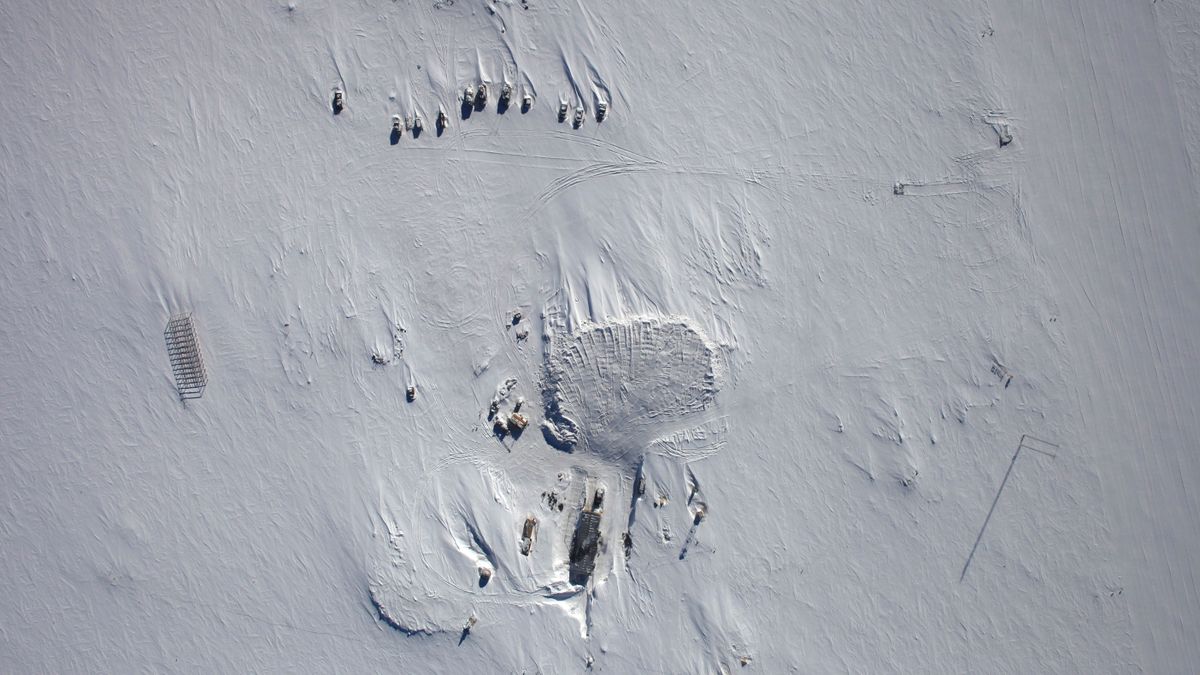QUICK FACTS
Name: Lake Vostok
Location: East Antarctica
Coordinates: -77.45268382042562, 106.23142584023033
Why it’s incredible: The lake is one of the largest on Earth, but it lies beneath several miles of ice.
Lake Vostok is a giant lake in Antarctica that is similar in size to North America’s Lake Ontario. But unlike Lake Ontario, Lake Vostok sits beneath more than 2 miles (3 kilometers) of wind-blown snow and ice.
Once an enormous surface lake, Lake Vostok became buried at least 15 million years ago, with some estimates suggesting it has been continuously covered for much longer — 20 million years or more. As a result of being cut off from light and the atmosphere for so long, the lake harbors a unique ecosystem of extremophiles — creatures that have evolved to thrive in extreme conditions.
Related: Scientists peered into a secret Antarctic lake hidden beneath the ice — and uncovered a never-before-seen ecosystem
Lake Vostok is about 150 miles (240 km) long and 30 miles (50 km) wide. It is the biggest of Antarctica’s more than 400 subglacial lakes, which are scattered across the continent because low levels of geothermal heat melt the base of the ice sheet.
The lake is located near Russia’s Vostok research station, roughly 800 miles (1,300 km) from the South Pole. Although scientists have occupied Vostok since 1957, they had no idea the lake existed until the 1960s, when a Russian geographer and pilot first noticed the flat, relatively smooth expanse of ice above it from the air.
In 1993, researchers found the lake with satellite-based radar technology capable of penetrating the ice. And in 2012, Vostok scientists finally succeeded in a years-long effort to drill down to the lake through the ice.
Lake Vostok is about 0.6 miles (1 km) deep at its south end and comparatively shallower at its north and southwest corners. Researchers mapped the bottom of the lake and found that the deep and shallow areas are separated by a ridge, which they think might be peppered with hydrothermal vents similar to those in the Pacific Ocean.
The lake’s only source of water is the ice sheet above it. The water temperature hovers around 27 degrees Fahrenheit (minus 3 degrees Celsius), but it remains liquid thanks to the crushing pressure of the overlying ice sheet, which lowers the freezing point of the water.
Countless species of microbes inhabit the lake, including marine lifeforms that suggest the water body was once connected to the ocean. Researchers sampled a layer of frozen water called accretion ice that sits on top of the lake and found it contains DNA from more than 3,500 organisms, including fungi and bacteria commonly found in the digestive tracts of fish.
Due to the lack of light blocking photosynthesis, these organisms have evolved to feast on minerals in the water and chemicals produced in the bedrock. Researchers think that further studying them could provide clues about life on other planets and moons, including Jupiter’s icy moon Europa.
Discover more incredible places, where we highlight the fantastic history and science behind some of the most dramatic landscapes on Earth.
